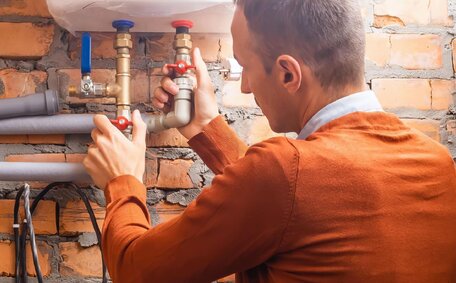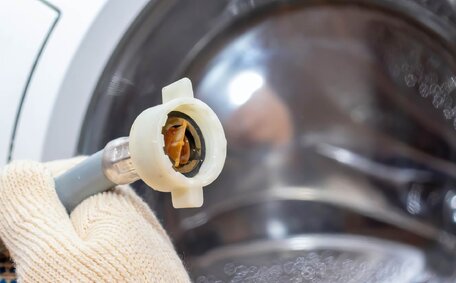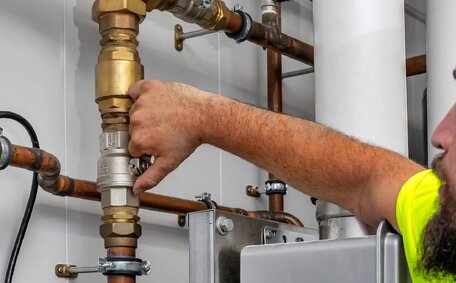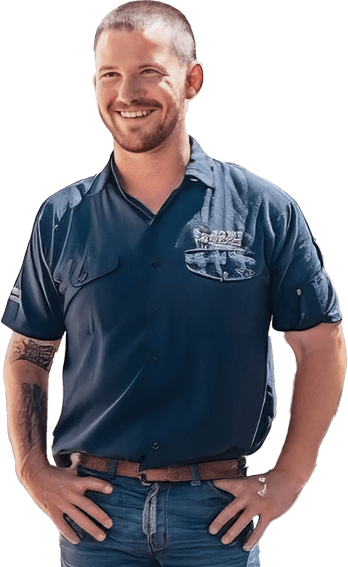Introduction to Hot Water System Regulations in Australia
Welcome to our comprehensive guide on hot water system regulations in Australia. Homeowners who value safety, efficiency, and compliance must grasp the statutory requirements and optimum practices for home hot water systems.
This article will provide an educational overview of the regulations, standards, and safety recommendations impacting hot water systems across the country. In this guide, we delve into proper installation methods, appropriate temperature settings, energy efficiency considerations and more to empower your informed decision-making.
Upcoming sections will cover specifics like maximum safe water temperatures, anti-scald devices, Using licenced tradespeople, facts on hot water burns and risks for vulnerable groups, renewable system rebates, and tips for carrying out your system maintenance. Our goal is to equip you with crucial insights to protect your loved ones while adhering to Australian hot water standards.
Understanding the Risks of Scalding
Scalding from hot water at 50 degrees centigrade poses a serious risk, which can be especially severe for children, seniors, and those with disabilities. Tap water exceeding 50°C can inflict third-degree burns in a mere second.
Exposed skin under excessively hot tap water can sustain permanent damage, necessitating extensive medical intervention.
To mitigate the perils of hot water, Australian plumbing rules mandate tempering valves to protect residents against severe risks. Tempering valves mix hot and cold water to ensure a consistent delivery temperature at or below 50°C from your taps and showers.
At all times, households with young children, seniors, or disabled residents should have their hot water temperatures checked by a licensed plumber to ensure hot water safety. Installing a tempering valve and anti-scald devices provides an extra layer of protection from dangerous hot water.
Minimum and Maximum Temperature Requirements
Australian regulations stipulate clear standards for the temperature should hot water have in residential systems to prevent scalding dangers and bacteria growth.
To maintain water safety, the storage temperature must be kept at 60°C or above. This temperature effectively kills Legionella bacteria that causes legionnaires disease. Temperatures more than 60°C prevent bacteria colonies from multiplying, reducing the contamination risk from storage tanks and pipes.
However, the temperature hot water delivered from taps and showers cannot exceed 50°C under plumbing code Australia.
Ideally, the temperature should hot water at taps attain is:
In summary, New water system regulations dictate that stored hot water should be at least 60°C, while delivery temperatures must be controlled not to exceed 50°C too rapidly. To optimise safety, particularly when the bathroom door is closed, those with vulnerable household members should fit tempering valves or control devices tuned to 43-45°C.
The Role of Tempering Valves
Tempering valves, also known as a control device, are a critical component in any domestic or commercial hot water plumbing installation under current Australian regulations.
These valves automatically blend hot water from the hot water tank with cold water to ensure a constant, safe temperature water coming out at 50°C or less. Without tempering valves, there’s hot water no regulation, which poses serious scald hazards as temperatures can reach 65-75°C directly from your hot water heater.
From the end of 2019, new electric hot water system installations must comply with National Construction Code (NCC) amendments and AS/NZS 3500 Plumbing Codes, which include small-scale technology certificates (STCs).
Current hot water setups without tempering valves have a legal duty to install them when renovating or if they fail to meet safety criteria. However, all households with children, seniors or people with disabilities should voluntarily install tempering valves for added protection.
Special Temperature Settings for Vulnerable Groups
Early childhood facilities must by law fit and uphold tempering valves, confirming dispensed water does not surpass 45°C for personal hygiene activities such as washing and bathing.
Ensuring Compliance Through Certified Plumbers
Engaging licensed and certified plumbers is crucial to ensure hot water systems conform to Australian installation regulations and safety standards. Under Australian regulations, only qualified tradespeople are authorised to undertake installations, repairs, and maintenance of hot water systems.
They keep abreast of the most current regulations, codes, and superior practices to establish compliant, efficient and secure systems.
Plumbers adjust hot water temperatures to correct levels, fit certified tempering valves, confirm functionality, and alert authorities of any non-compliance or hazards.
DIY meddling with hot water systems is not only unlawful but also potentially dangerous.
Maintaining Your System
Regular maintenance by licensed plumbers is necessary to ensure ongoing compliance, safety, and consistent temperature control for hot water. This involves annual inspections and servicing to check functionality, efficiency, and temperature regulation.
During maintenance checks, plumbers will test valves, anodes, heating elements, thermostats, circulation pumps and more. They will also ensure safe temperature levels, check related plumbing and electrical systems, clean out the tank, and inspect for leaks or corrosion.
Schedule yearly maintenance for your hot water system to ensure optimal performance. Tempering valves specifically need inspection and potential replacement every 5 years as they can malfunction over time. Keep records of all service and repairs.
Preventative maintenance enables plumbers to proactively address minor issues before they escalate. It also gives peace of mind your system meets all legal standards. Remember, properly maintained hot water systems last longer while maximising energy efficiency.
Upgrading With Temperature Control Devices
When your hot water system needs upgrading or replacing, it is highly recommended to install a temperature control device like thermostatic mixing valves.
Thermostatic mixing valves seamlessly mix hot and cold water to maintain safe delivery temperatures under 50°C, constituting an indispensable safety element. They provide reliable scald protection that older hot water systems lack.
For homes replacing storage systems, consider a hot water system new installation that offers efficient instantaneous gas water heaters with built-in tempering valves. Alternatively, consider installing solar heat pump hot water systems with gas or electric boosting and a temperature control valve for energy savings.
New hot water system installations must adhere to rigid energy efficiency standards, which may include incentives like STCs for utilising renewable energy. Opting for high-efficiency solar hot water systems with cutting-edge technology ensures compliance while reducing operating costs and greenhouse gas emissions.
Speak with trusted, licensed plumbers for systems that fulfil the stringent compliance standards tailored for your home. They are equipped to install thermostatic mixing valves to enhance safety or recommend new, energy-efficient models that meet contemporary codes.






